Did you know that over 85% of the world's traditional karate techniques originate from Okinawan Karate techniques? Discover the enduring power and legacy behind these dynamic moves—unravel what sets Okinawa karate apart and how mastering these ancient techniques can change your martial arts journey forever.
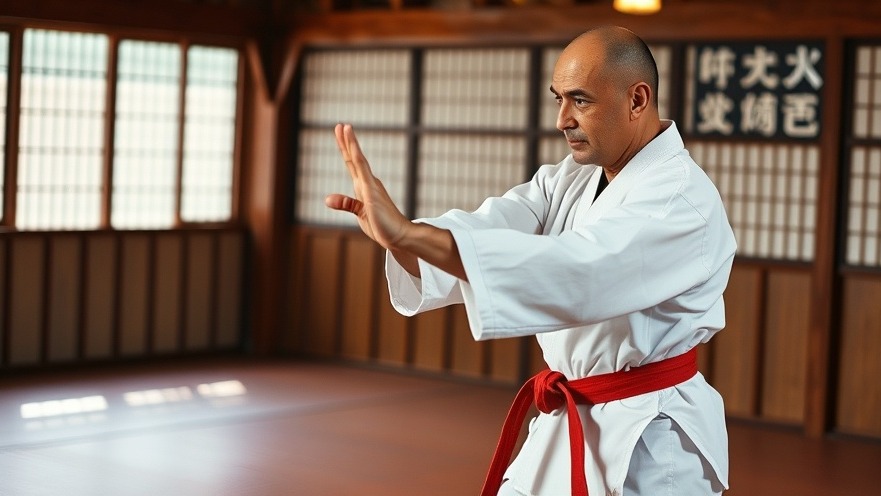
Unlocking the Power of Okinawan Karate Techniques
Explore the significance of Okinawan Karate techniques and why they remain foundational in the world of martial arts.
Okinawan Karate techniques stand at the very heart of global martial arts practice, earning reverence for their blend of tradition, power, and effectiveness. These techniques are not merely a set of moves; they represent a time-honored path to self-improvement, practical application, and physical mastery . For centuries, practitioners around the globe have looked to Okinawa bushi traditions for authentic wisdom, making Okinawa karate a living legacy embedded in every reference kata and modern dojo. Unlike fleeting martial arts fads, the rich discipline, and rigorous detail of these techniques have withstood the test of time, delivering real-world self-defense and mental sharpness.
What truly sets Okinawan Karate techniques apart is their focus on adaptability, effectiveness at close range, and integration of both hard and soft elements. While many karate styles aspire for efficiency and power, the Okinawan approach establishes roots in centuries-old strategies where every stance and strike is designed with practical application in mind. This leads to a martial arts style that is both accessible for beginners and endlessly challenging for advanced students. As you unravel the mechanics and philosophies of Okinawa karate, you set yourself on the path to greater strength, confidence, and a deeper appreciation for the art.
What You Will Gain by Mastering Okinawan Karate Techniques
• Improved discipline, self-confidence, and situational awareness
• Practical self-defense applications and real-world impact
• Insights into authentic Okinawa karate wisdom passed down for generations
Mastering Okinawan Karate techniques brings more than physical prowess—it sculpts the mind and spirit, nurturing discipline, self-confidence, and a readiness for the challenges of everyday life. Through rigorous, step-by-step training, students learn to maintain calm under pressure, react with intent, and develop a keen sense of situational awareness. This discipline, reflected through consistent practice of reference kata and forms, paves the way for growth beyond the dojo.
Equally important are the practical, real-world benefits: Okinawan Karate techniques are deeply rooted in self-defense principles that are both powerful and effective in unpredictable scenarios. Every blocking, striking, or evading technique has been refined for generations for maximum impact and minimal waste. Whether you’re aiming to build a strong foundation in martial arts or seeking to protect yourself and loved ones, Okinawa karate delivers reliable, time-tested techniques. As you delve deeper, you'll also connect to a living tradition, inheriting the collective wisdom of karate masters from ancient Okinawa to today.
A Brief History of Okinawan Karate and Its Techniques
Origins of Okinawan Karate: Rooted in Tradition and Innovation
Learn about the cultural heritage and evolution of Okinawa karate and how ancient Okinawan karate techniques evolved to influence modern martial arts.
The journey of Okinawan Karate begins amid the vibrant confluence of cultures in the Ryukyu Kingdom, where merchants and warriors exchanged knowledge with neighboring China and Southeast Asia. The island’s unique history fostered a martial culture that fused ancient indigenous fighting methods with imported techniques, resulting in the rich tapestry of techniques of Okinawan karate we know today. Notably, manuscripts like the manuscript bubishi and ancient illustrations prove that the “elbow smash”—used to smash an opponent’s face —existed in the foundational arsenal of Ryukyu martial arts.
Okinawan karate evolved throughout centuries of adaptation, secrecy, and refinement—often practiced in small, closed communities to evade weapon bans imposed by ruling powers. Iconic karate masters such as Gichin Funakoshi would later introduce these techniques to mainland Japan, transforming the profile of karate worldwide. Yet, despite modernization, the core essence of Okinawan Karate techniques —discipline, efficiency, and formidable practicality—remains preserved, influencing styles like Goju-ryu and Shorin-ryu.
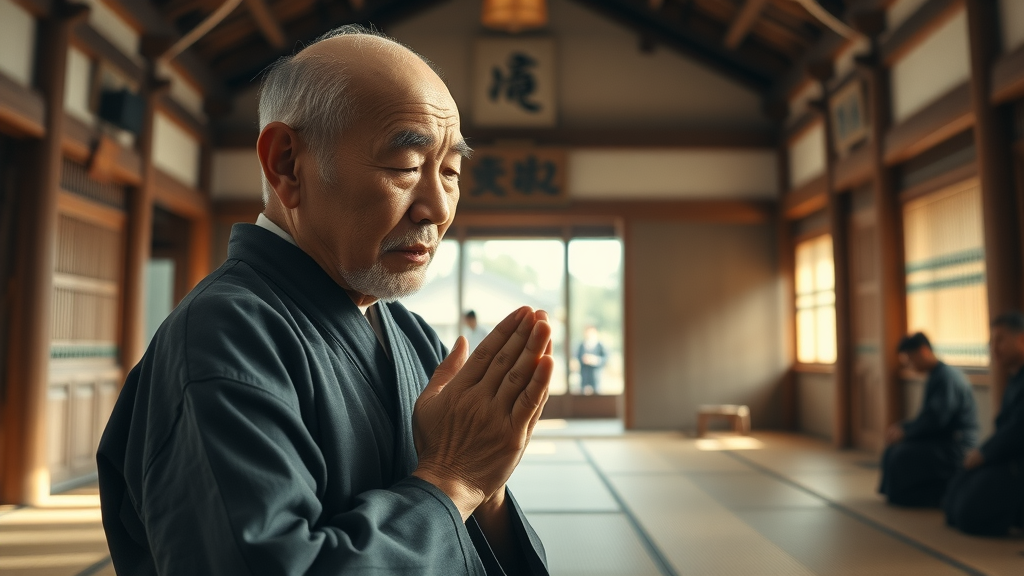
Key Principles Underlying Okinawan Karate Techniques
The Role of Discipline and Form: Foundation of Techniques of Okinawan Karate
Analyze the main philosophies behind effective Okinawan Karate techniques, including stances, rhythm, and mental focus.
At its core, Okinawan Karate emphasizes the unyielding importance of discipline and precise form . This means that every movement—whether a stance, punch, or block—is executed with focused intent and absolute control. Correct stances, such as shiko-dachi or zenkutsu-dachi , provide stability and power, serving as the foundation for all subsequent techniques. Understanding rhythm, timing, and breathing is equally vital, echoing traditional philosophies that physical form must harmonize with mental clarity.
This disciplined approach is what makes techniques of Okinawan karate both accessible to novices and essential for seasoned martial artists. By internalizing kata sequences, students sync mind and body, sharpening reflexes and cultivating readiness for real-world situations. True mastery comes not just from repetition, but from the relentless pursuit of perfect form—prioritizing technique precision over brute speed or force. This dedication, handed down across generations, forges both the character and practical effectiveness of every karateka.
Essential Stances and Strikes in Okinawan Karate Techniques
Common Stances: Shiko-dachi, Zenkutsu-dachi, and More
Step-by-step breakdown of primary Okinawan Karate stances with key performance tips.
Stances are the backbone of Okinawan Karate techniques , laying the groundwork for balance, defense, and offensive power. The Shiko-dachi (sumo stance) delivers a wide, grounded base perfect for withstanding strong attacks, while Zenkutsu-dachi (front stance) optimizes forward drive and reach. Instructors often stress the necessity of weight distribution: keep your knees bent, back straight, and feet firmly gripping the floor. Correct posture improves your ability to move fluidly and initiate powerful strikes or blocks.
Other core stances such as Kiba-dachi (horse stance) and Neko-ashi-dachi (cat stance) support quick footwork and sudden transitions, vital for both offense and defense. Each stance is honed with repetition in kata and drills—imparting lessons of stability, readiness, and adaptability. Practicing these basics until they become second nature is key; as you advance, subtle refinements in stance can mean the difference between dominating an exchange and exposing yourself to a counter.
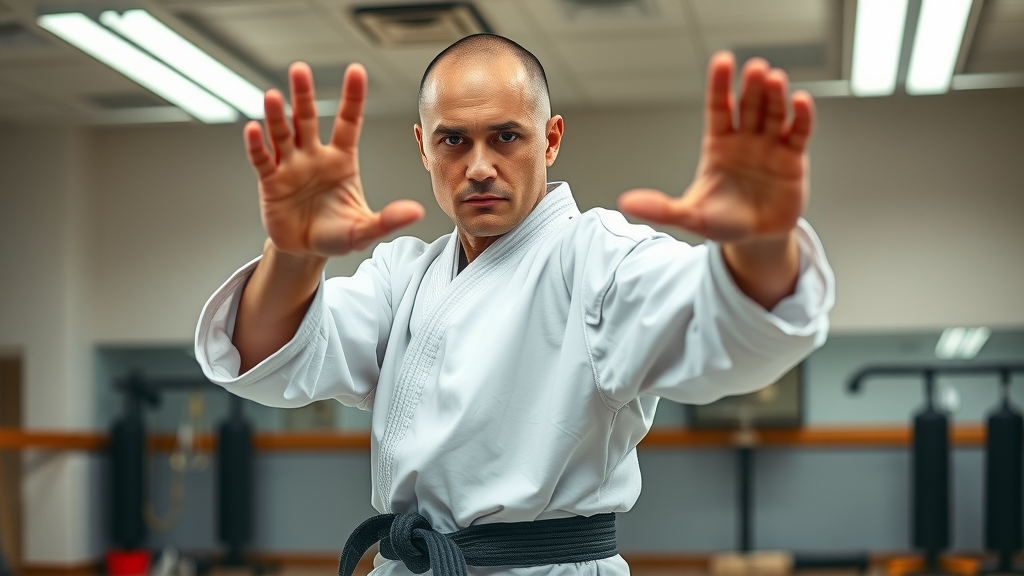
Foundational Strikes: Tsuki, Uchi, and Keri
Detailed illustrations of core Okinawan Karate techniques for effective offense and defense.
When it comes to striking techniques , Okinawan Karate is renowned for the devastating precision of moves like Tsuki (straight punch), Uchi (striking with the forearm or elbow), and Keri (kick). The Tsuki is aimed at an opponent’s face or solar plexus , channeling the force through the hip and shoulder for maximum penetration. Historical reference, such as similar drawing also exists in the manuscript bubishi , affirms the effectiveness of these strikes, as well as their presence since ancient Okinawa.
The elbow smash (Empi-uchi), for example, is a close-range strike designed to smash an opponent’s face or body, providing both offense and counterattack options. Kicks, such as mae-geri (front kick) and yoko-geri (side kick), are employed with precision targeting—rarely wasted with wild swings. Real proficiency in these foundational strikes requires not just physical strength, but an understanding of body mechanics and timing, achieved through consistent practice and mindful repetition.
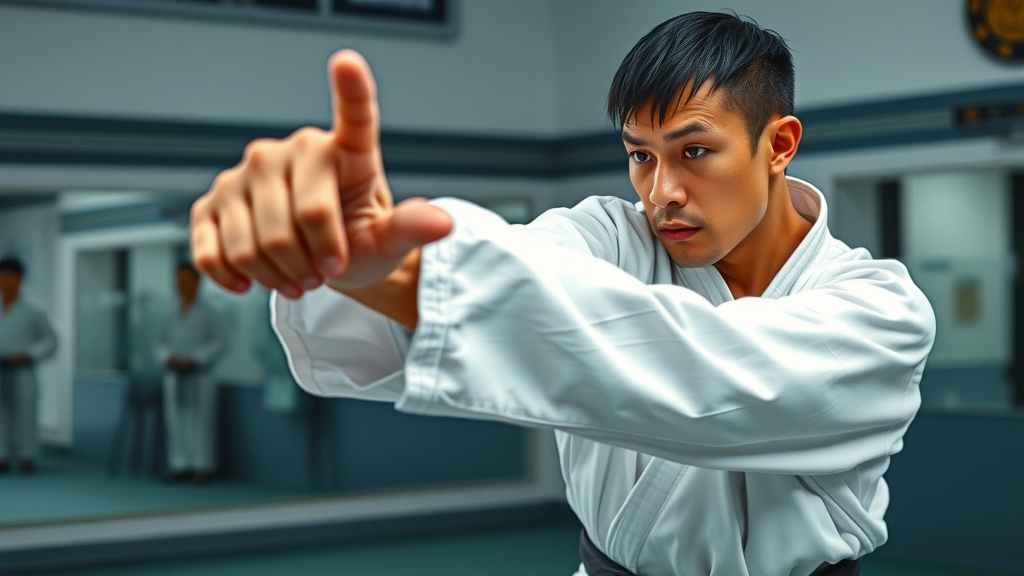
Block, Parry, and Deflect: Defensive Techniques of Okinawan Karate
Okinawan Karate Blocks: Age-uke, Soto-uke, Uchi-uke, and Gedan-barai
Practical guidance on executing each block flawlessly in line with traditional Okinawa karate standards.
Effective defense is a hallmark of Okinawan Karate techniques . The primary blocking maneuvers include Age-uke (rising block), Soto-uke (outside block), Uchi-uke (inside block), and Gedan-barai (lower sweep block). Each block serves a distinct role—for example, Age-uke shields the head from incoming punches, while Gedan-barai intercepts low kicks or sweeps. The mechanics behind these defenses hinge on structure and angle; a block must deflect or redirect force, not merely absorb it.
Okinawa karate advocates drilling these techniques until they are instantaneous, ensuring the body and mind react as one. Mastery involves more than mechanical repetition—each movement is performed with proper breathing, hip rotation, and a keen eye on your opponent's intent. By combining strong stances with fluid, purposeful blocks, practitioners remain both protected and poised to counterattack with their next move.
How to Parry and Redirect Attacks: Key Defensive Moves
Apply Okinawan Karate techniques to neutralize common threats and remain in control.
Parrying and redirecting attacks are advanced skills that distinguish Okinawan Karate techniques in real-world self-defense. A skilled karateka learns to step a side , using minimal force to glide, guide, or “stick” to the attacker’s limb. This strategy, derived from physical and mental agility, allows one to remain balanced while neutralizing an opponent’s aggression—with opportunities to counter open instantly. Moves such as open-hand deflections and circular parries showcase the adaptability and tactical wisdom embedded in Okinawan karate.
Training to redirect and capitalize on momentum is a critical element, with drills focusing on close-range exchanges where instantaneous response spells the difference between safety and vulnerability. In both kata and sparring, these defensive maneuvers are honed—empowering practitioners with the skills to stay composed amidst chaos, and to respond with decisive, practical application.
Kata: The Heart of Okinawan Karate Techniques
What Are Kata? Importance in Okinawa Karate
Understand why practicing kata refines both mind and body, and how it captures the essence of techniques of Okinawan karate.
Kata is the living soul of Okinawan Karate techniques , serving as the structured choreography through which generations have preserved and transmitted martial wisdom. Each reference kata encodes strategies, counters, and counters-to-counters—making kata both a dictionary of techniques and a training method for mind-body integration.
Practicing kata cultivates mental focus, discipline, and fluid motion , embedding the core principles of timing and distance that define Okinawa karate. Repetition of key kata, such as Sanchin and Seisan, refines the practitioner’s understanding, pushing them from rote memorization toward deep internalization. This systematic routine allows martial artists to experience and embody the philosophies of the past, while developing the adaptability and strength needed for modern application.
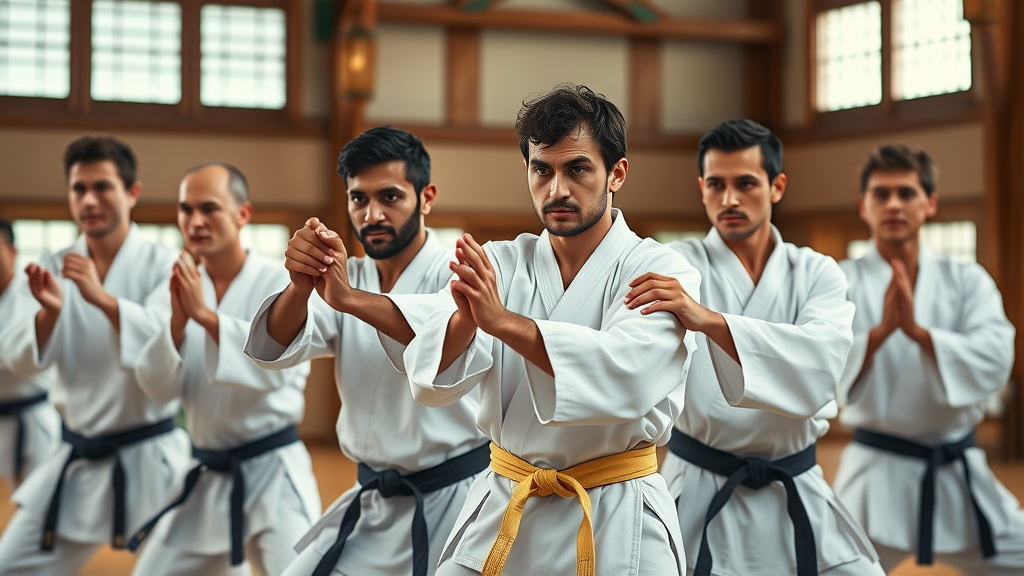
Top Kata for Building Powerful Okinawan Karate Techniques
A ranked list of must-learn kata—from Sanchin to Seisan—perfect for developing mastery.
Sanchin: The cornerstone of Goju-ryu, essential for breathing, posture, and internal strength.
Seisan: A classic reference kata focused on practical application and variety in attack and defense.
Saifa: Trains explosive movements and close-range combinations.
Shisochin: Develops circular defense and redirection skills, central to Okinawan Karate techniques.
Sanseru: Focuses on dynamic shifting and targeted strikes.
Combining Okinawan Karate Techniques: Drills and Sparring Applications
Effective Drills to Sharpen Techniques of Okinawan Karate
Try these essential drills to perfect your form, speed, and accuracy in every Okinawan Karate technique.
Consistency is the foundation for excellence in Okinawan Karate techniques . Foundational drills—like paired block-and-strike routines, fast-twitch reaction exercises, and stances-to-movement transitions—are essential for etching perfect form into muscle memory. For example, practicing repetitive tsuki/age-uke patterns or dynamic combination drills instills speed and sharpness, while slow, focused repetitions help refine each nuance of motion.
Shadowboxing with visualization, using a mirror or a reference point, reinforces targeting, distancing, and adaptation. By integrating these drills into practice, students unlock the ability to respond reflexively, adapting core Okinawa karate forms to fast-evolving scenarios both inside and outside the dojo.
Applying Okinawan Karate Techniques in Sparring Scenarios
Real-world applications: How Okinawan Karate techniques work under pressure and in self-defense situations.
Transitioning from drills to live sparring reveals how Okinawan Karate techniques perform under real-world stress. In these controlled yet intense environments, practitioners test their defensive and offensive skills, learning to read subtle cues, capitalize on openings, and maintain composure under pressure. Sparring develops timing, resilience, and the capacity to act decisively, all key tenets in Okinawa karate instruction.
Real-world scenarios often involve rapid changes and high stakes—qualities that classic Okinawan blocks, parries, and counterattacks are designed to address. Adaptive strategies such as stepping aside or redirecting momentum become vital in these exchanges, underscoring why Okinawa karate remains one of the most effective self-defense systems in martial arts today.
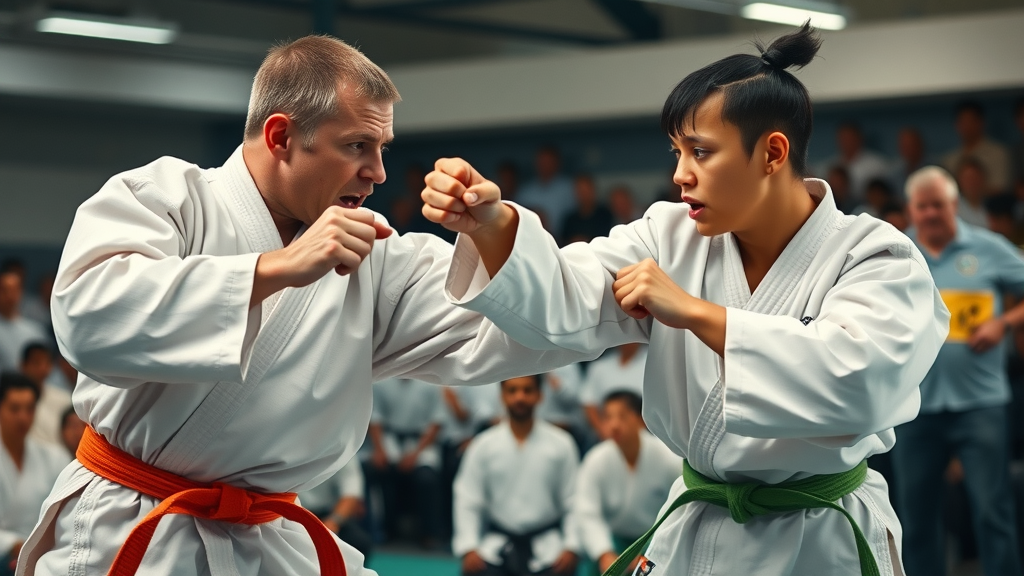
Understanding Karate Styles: Okinawan Karate versus Other Traditions
Aspect |
Okinawan Karate Techniques |
Japanese Karate Techniques |
Korean Martial Arts |
|---|---|---|---|
Philosophy |
Balance of hard (Go) and soft (Ju); real-world focus, adaptability, tradition |
Emphasis on formality, competition, and linear movement |
Dynamic, high kicks, continuous flow, and sporting focus |
Signature Techniques |
Close-range strikes, joint locks, circular movement |
High, fast kicks; sharp punches; tournament kata |
Jump kicks, spinning kicks, extended leg techniques |
Training Methods |
Kata, bunkai (application), intense conditioning, partner drills |
Kihon (basics), fixed sparring, point-based competitions |
Kyorugi (sparring), breaking techniques, board smashing |
Goal |
Self-defense, self-improvement, holistic strength |
Performance, points, controlled impact |
Athleticism, agility, spectacle |
Expert Quote: Insights from a Renowned Karate Master
"Mastery of Okinawan Karate techniques is about respect, discipline, and effective self-defense—an art that shapes both character and courage." – Sensei Hiroshi Nagamine
Choosing the Right Okinawan Karate Style
Explore Goju-ryu, Shorin-ryu, and Uechi-ryu—find the best fit for your personal goals with Okinawa karate.
With several branches flourishing in Okinawan karate, choosing the right style aligns closely with your goals and preferences. Goju-ryu marries the hard (go) and soft (ju) aspects—focusing on breathing, tension, and circular defense—making it renowned among those seeking holistic development. Shorin-ryu embodies speed, agility, and upright posture, suitable for those with a preference for swift, dynamic movements.
Uechi-ryu , on the other hand, is famous for rigorous conditioning, open-handed strikes, and toughening the body against impact. Each has its lineage, kata, and unique approach, so sample classes or trial lessons are recommended to discover which school resonates with your temperament, fitness level, and long-term ambitions.
What Customers Say: Impact of Okinawan Karate Techniques Training
Customer Reviews: Okinawa Karate Personal Transformations
Real-life testimonials highlighting the positive influence of Okinawan karate on confidence, discipline, and strength.
Customer reviews repeatedly highlight life-changing experiences—boosting confidence, discipline, and strength—thanks to Okinawan karate . Many cite the inclusive, supportive atmosphere of dojos and the inspiring guidance of caring instructors as contributing to transformative growth. “Joining Okinawan karate improved my fitness, focus, and ability to handle stress,” says one grateful student. “I felt safer and more capable in everyday life.”
Another student wrote, “I’d never enjoyed exercise before, but learning these techniques of Okinawan karate made every session fun and rewarding. The sense of accomplishment after mastering a challenging kata is like nothing else.” These customer reviews reinforce that the benefits of Okinawa karate extend far beyond the mat, creating lasting improvements in personal and professional life.
Video: Live Demonstration of Essential Okinawan Karate Techniques
Watch advanced Okinawan karate moves in action by experienced karate masters.
Witness the fluid grace and intensity of black belt karate masters as they perform iconic Okinawan Karate techniques in a traditional dojo. Slow-motion segments and multiple camera angles reveal every detail of vital strikes, blocks, and kata—giving you an inside look at what it takes to reach mastery. Let these demonstrations inspire your own practice and deepen your connection to Okinawan martial arts.
People Also Ask: What Makes Okinawan Karate Different?
Okinawan Karate techniques are distinguished by their deep-rooted focus on close-range self-defense, circular motion, and adaptability, emphasizing real-world applications derived from centuries-old practices.
People Also Ask: What is the Best Okinawan Karate Style?
While each Okinawan Karate style—like Goju-ryu and Shorin-ryu—offers unique strengths, Goju-ryu is often celebrated for its balance of hard and soft techniques and holistic development.
People Also Ask: What's the Hardest Karate Style?
Among all styles, Uechi-ryu (an Okinawan karate style) is renowned for its rigorous training and emphasis on conditioning, making it one of the hardest styles to master.
People Also Ask: What is Okinawa Karate Called?
Okinawa karate is commonly called 'Karate-do,' with traditional schools or ryu such as Goju-ryu and Shorin-ryu originating from the Okinawa islands.
Frequently Asked Questions about Okinawan Karate Techniques
How long does it take to master basic Okinawan Karate techniques? Most students can achieve proficiency in basic techniques within 6 to 12 months of regular, focused training. Advancement to higher ranks and deeper mastery depends on consistency, dedication, and the complexity of forms (kata) practiced.
Are Okinawan Karate techniques effective for self-defense? Absolutely. Okinawan Karate techniques were developed for practical self-defense and prioritize real-world applications, allowing practitioners to quickly neutralize threats and protect themselves or others.
What are the most famous techniques of Okinawan Karate? Some of the most iconic techniques include the straight punch (Tsuki), elbow smash, inside and outside blocks, and foundational kata like Sanchin and Seisan—all core to effective offense and defense.
Can children learn Okinawan Karate techniques? Yes! Okinawan karate is suitable for all ages. Children benefit from improved discipline, confidence, coordination, and social skills in a structured and supportive dojo environment.
Video: How to Perfect Your Okinawan Karate Techniques at Home
Step-by-step video tutorial led by a senior karate master demonstrating drills and form tips for solo training.
Practice along at home as a senior karate master provides step-by-step demonstrations of fundamental drills, stances, and strikes. These solo training tips reinforce perfect form and help you internalize the core spirit of Okinawan Karate—even outside the dojo.
Pro Tips and Key Takeaways for Mastering Okinawan Karate Techniques
• Consistent practice is the key to excellence
• Prioritize precise form over speed
• Apply lessons from kata to real-world scenarios
• Seek guidance from qualified Okinawa karate masters
Remember, the path to mastery in Okinawan Karate techniques is built on patience, focus, and willingness to learn. Every class, every drill, and every kata is a step forward—trust the process and celebrate progress.
Video: The Evolution of Okinawan Karate Techniques Through Time
An educational overview illustrating how Okinawan karate evolved, showcasing archival footage and expert commentary.
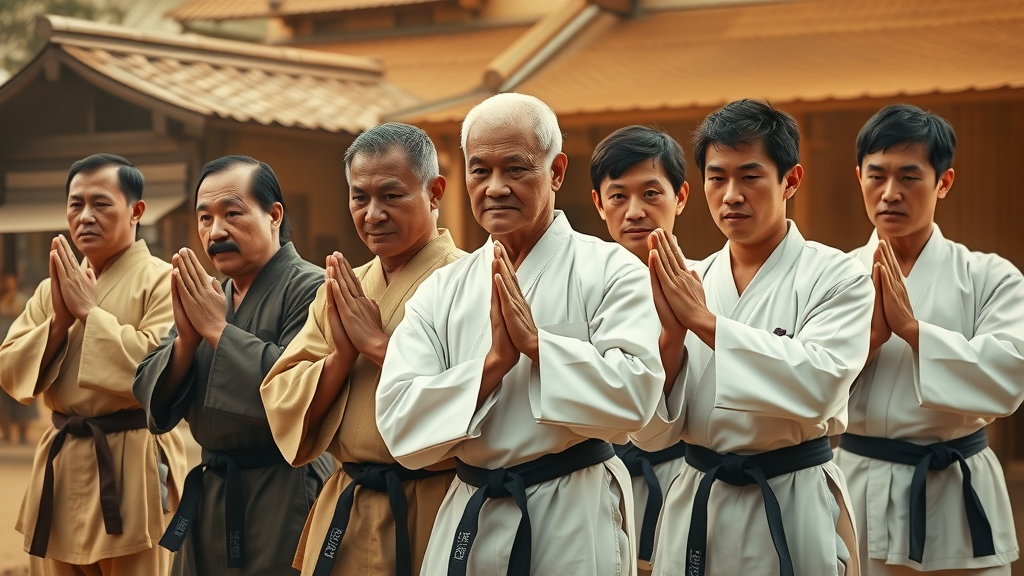
Explore the fascinating evolution of Okinawan karate through this visual journey—witness changes in technique, philosophy, and training methods from ancient Okinawan villages to modern global dojos. Archival footage, expert commentary, and historical context bring this legacy to life.
Begin Your Journey with Okinawan Karate Techniques: Enroll Today!
Build confidence, discipline, and strength. Enroll NOW at Gruber’s Karate, Gurnee’s 5 Star Rated Trusted Martial Arts Center! Sensei@gruberskarate.com Gruber's Karate 5725 Stearns School Rd Gurnee, IL 60031 (224) 347-6655 GrubersKarate.com
Take action today: Begin your Okinawan Karate journey for self-defense, focus, and personal growth with the support of expert instructors and a supportive community.
To deepen your understanding of Okinawan Karate techniques, consider exploring the following resources:
“Okinawan Karate: Basic Techniques and Terminology” : This resource provides a comprehensive glossary of terms and fundamental techniques essential for practitioners at all levels. ( okinawankarate.org )
“Shōrin-ryū” : This article offers an in-depth look at the Shōrin-ryū style, detailing its training methods, kata, and unique characteristics within Okinawan Karate. ( en.wikipedia.org )
These resources will enhance your knowledge and appreciation of Okinawan Karate techniques, offering both foundational insights and detailed explorations of specific styles.
 Add Row
Add Row  Add
Add 

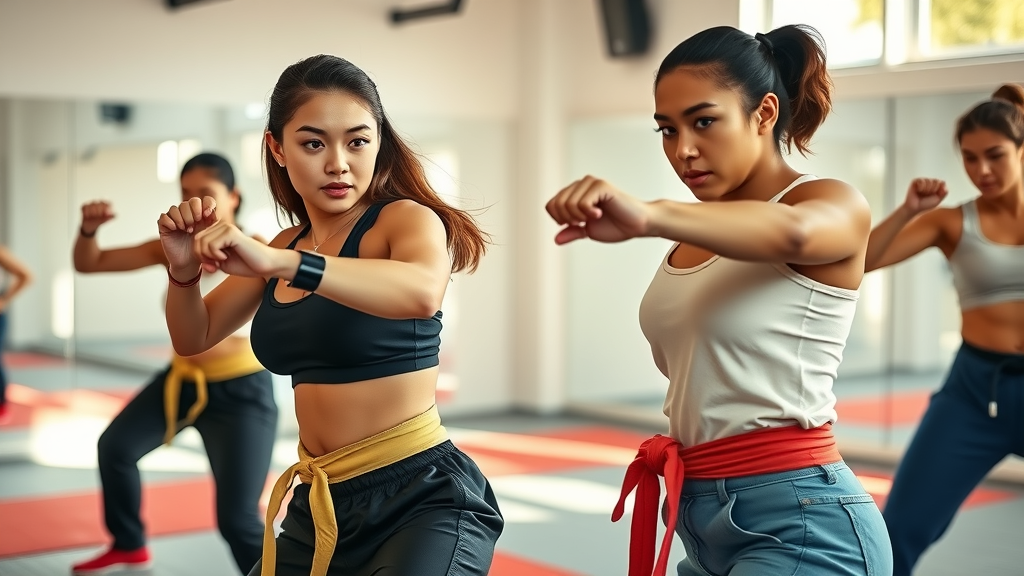

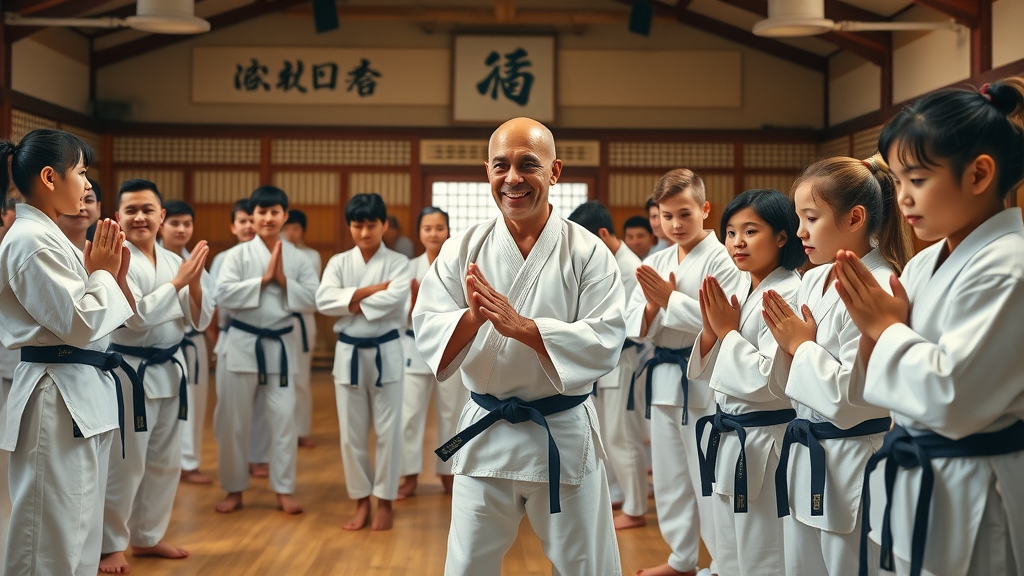
Write A Comment